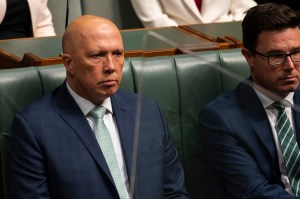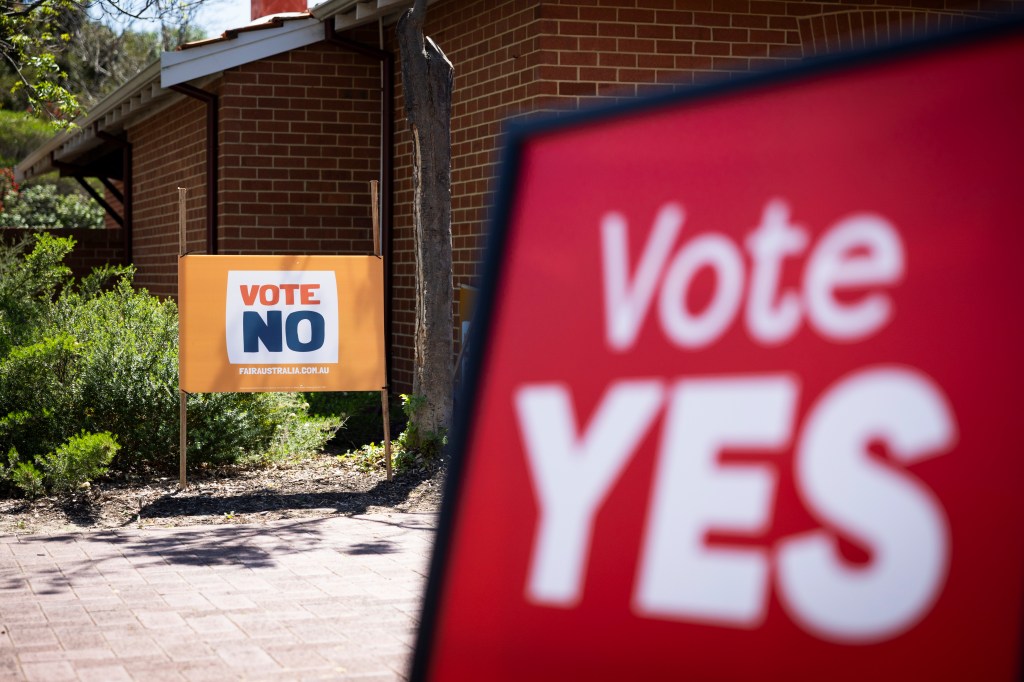On October 14, Australians will vote on whether an Aboriginal and Torres Strait Islander Voice acting as an Indigenous government advisory body should be enshrined in the Constitution.
If passed, the Voice would make representations to the parliament and the executive government on issues relating to Aboriginal and Torres Strait Islander peoples. The Voice would be able to advise on improving programs and services for First Nations people, but it won’t be in charge of managing money or delivering those services. That power still rests with the government.
Videos by VICE
This constitutional change has been a long time coming, but a range of different Indigenous advisory bodies have previously existed – and still do. Here’s what they’ve achieved.
Several federal Indigenous advisory bodies have been formed and dissolved since 1973
From the NACC (1973-1977) to NAC (1977-1985)
It wasn’t until 1973 that the first elected Indigenous advisory body was formed: The National Aboriginal Consultative Committee (NACC), composed of 41 members elected by 27,000 Indigenous voters.
But tussles over the slow pace of land rights legislation and a desire to move beyond a purely advisory role meant the NACC frequently clashed with the Whitlam government which formed it, and the successive Fraser government, which eventually scrapped the Committee in 1977.
In its place, the National Aboriginal Conference (NAC) was formed. The NAC pushed for Treaty and advocated for land rights but was abolished by Prime Minister Bob Hawke in 1985, who would form the Aboriginal and Torres Strait Islander Commission (ATSIC) just four years later.
Since the NACC and NAC were administered under the Department of Aboriginal Affairs and not legislated, they could be easily dissolved without any parliamentary scrutiny.
ATSIC (1989-2005)
ATSIC emerged from legislation and was designed to not only represent First Nations people as per its predecessors but to also deliver services to Aboriginal and Torres Strait Islander people.
It was successful in placing services in Indigenous hands, with the now-separate Torres Strait Regional Authority, originally part of the Commission, still in operation today. But it had a tumultuous run over its 16-year lifespan and representatives of the Commission felt “it was the scapegoat for the inadequacies of all levels of government in Indigenous affairs.”
During his first term, Prime Minister John Howard cut funding to ATSIC and, in 2003, restructured it. A government review and media scandal meant that by 2004, both Labor and Liberal camps were promising to abolish the body in the lead-up to the federal election, securing its demise.
NIC (2005-2007), NCAFP (2009-2019), PMIAC (2013-2019)
In 2005, Howard formed the National Indigenous Council (NIC), composed of a hand-picked set of members, to advise his government. By 2008, newly elected PM Kevin Rudd dissolved the council to make way for the National Congress of Australia’s First Peoples (NCAFP) in 2009.
The NCAFP played a significant role in coordinating Indigenous peak bodies to issue the Redfern Statement in the lead-up to the 2016 election. The Congress’ co-chairs Dr Jackie Huggins and Rod Little participated in the conventions that led to the Uluru Statement from the Heart, the document that calls for a constitutional First Nations Voice.
Initially, the NCAFP was set up as a standalone corporation to protect it from future government dissolution, which left it financially vulnerable. Since the body was funded through the budget process, its operations would still be determined by the government.
By the end of its lifespan, the Congress relied on paid subscriptions from Aboriginal and Torres Strait Islander members and organisations. In 2019, it entered voluntary administration and ceased operations.
Meanwhile, in 2013, Tony Abbott created the Prime Minister’s Indigenous Advisory Council (PMIAC) with current anti-Voice campaigner Warren Mundine as chair. Though never formally abolished, PMIAC disappeared in 2019.
What Indigenous advisory bodies currently exist at a federal level?
Currently, the Coalition of Aboriginal and Torres Strait Islander Peak Organisations, otherwise known as the Coalition of Peaks, is the predominant government representative body. Formed in 2018 as a non-incorporated non-government organisation, it very much continues the work of the NCAFP (2009-2019).
At present, the Coalition of Peaks is working with all state, federal and territory governments to make decisions on the Closing the Gap strategy, following the National Agreement, signed in July 2020.
Why is the Voice to Parliament different?
While the Coalition of Peaks is an Indigenous advisory body, it is different to the proposed Voice to Parliament. The Coalition of Peaks is formed by more than 80 peak bodies and organisations that deliver services and support to Aboriginal and Torres Strait Islander people across Australia, while the proposed Voice won’t deliver services, it would provide advice to the government on where programs and services should be targeted.
The Coalition of Peaks highlights that it is just one part, alongside “the Voice, Truth Telling, and Treaty [that] will provide our nation with the complete roadmap to improve the life outcomes of our people.”
But what about on a state level?
Some state governments are advised by Indigenous representative bodies. This includes South Australia, which legislated a First Nations Voice in March this year.
Like the proposed national Voice, the South Australian Voice will make representations to the state parliament and executive government on matters relating to First Nations people. The South Australia Voice is composed of a State First Nations Voice and six Local First Nations Voices, who will deliver annual reports and provide state parliament with reports on matters of interest to First Nations people at any time.
The first election will take place on March 16, 2024. After that, the state Voice will start operating and likely provide clues as to how a national Voice could shape up if it’s passed.
Victoria’s First Peoples’ Assembly
The First Peoples’ Assembly acts as a democratic voice for Aboriginal and Torres Strait Islander Victorians. Comprising 31 members who are elected by First Nations communities every four years, the assembly is also tasked with negotiating Treaty with the Victorian state government.
The Aboriginal and Torres Strait Islander Elected Body – ACT
Since 2008, the Aboriginal and Torres Strait Islander Elected Body (ATSIEB) has represented the views of First Nations people in the ACT. Members of ATSIEB are democratically elected to provide advice to government agencies and ministers on matters of concern to their communities. The body is also a member of the Coalition of Peaks.
So what does this all mean for the Voice to Parliament Referendum?
The proposed Voice to Parliament wouldn’t be the first Indigenous advisory body to exist, but, it is fundamentally different to those of the past.
Since it would be constitutionally enshrined, the Voice would not be able to be removed at the whims of the next elected government – an issue that has limited Indigenous advisory groups of the past.
And what next?
For the referendum to pass, a double majority is required, which means that at least four out of the six states must vote yes. Following that, there will be a process with Indigenous communities alongside Parliament and the broader public to settle the Voice design. The legislation will then have to go through the regular parliamentary processes, which will ensure adequate scrutiny by elective representatives in the lower and upper houses.
Madeline Lo-Booth is a journalist who writes on culture and politics.






